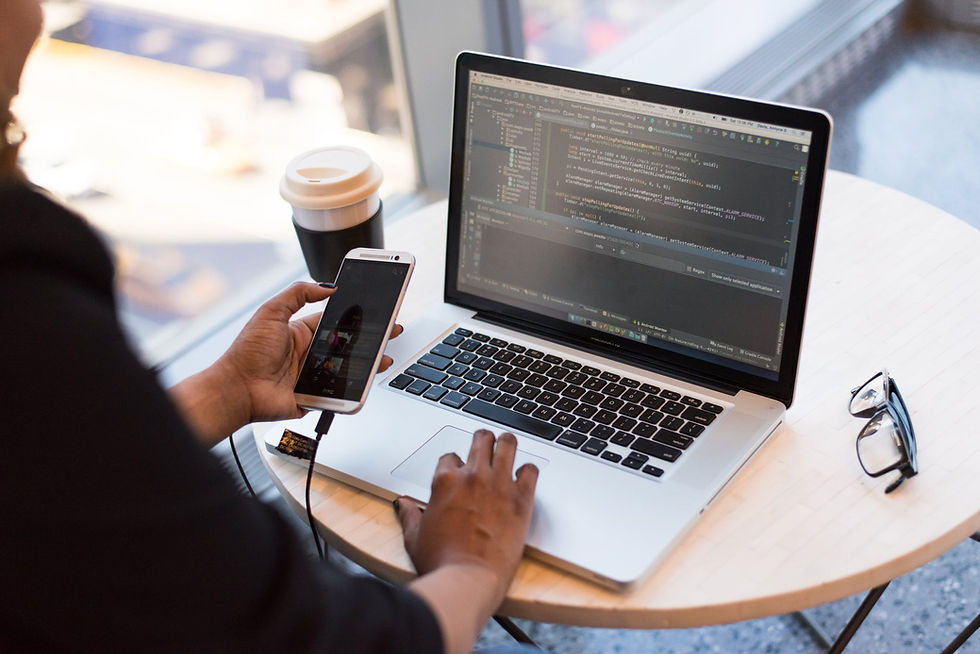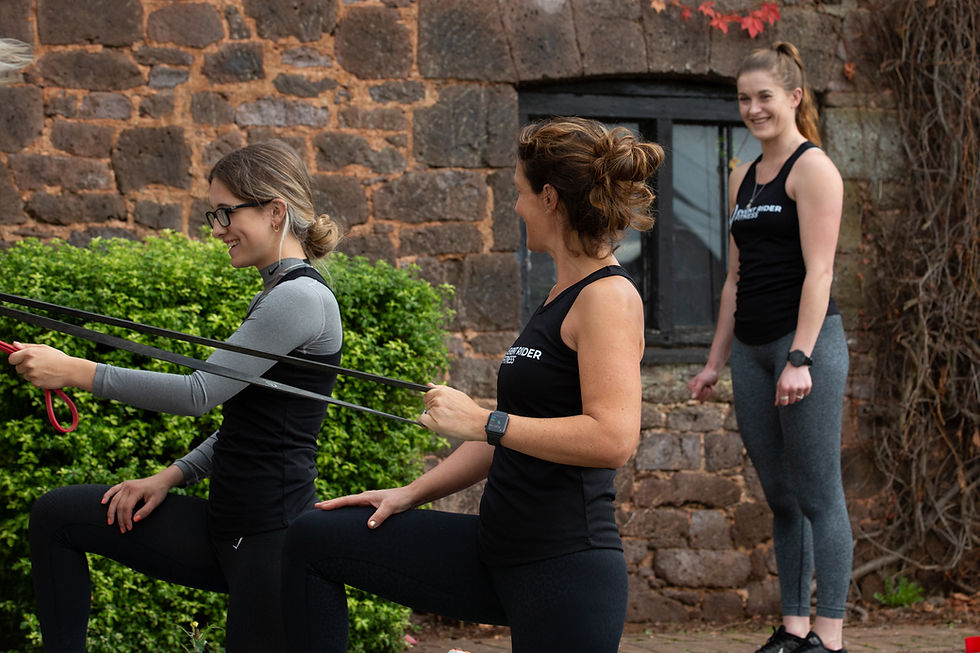Creating a Training Plan
- kmbleekman
- Apr 27, 2023
- 6 min read
Have you ever found yourself standing in the gym, looking at all the kit & thinking what the hell am I meant to do here? Been ready to start some exercise at home then starting trawling youtube for workout videos & got totally lost? Or followed a plan online for a few weeks, found you’ve made a bit of progress but then you don’t know where to go next once the plans finished?

All of these things are things I’ve definitely experienced myself & most of my clients have at some point. It’s easy to think you’re stupid for not knowing what to do but planning resistance & aerobic exercise that gives you progress is hard to do! You need a long-term programme that focuses on progressive overload & gives you a roadmap to follow to get you to your goals.
Once you hit your goals you can then reassess, revisit your goals, redesign to where you are now & what you want to achieve this time & you go again! Giving my riders personalised training programmes week to week takes away the guesswork & self-doubt, allowing them to gain progress as they have a plan to work with but most importantly the plan also helps clients to start to understand why what they’re doing is working.
So if you’re looking to get started with your fitness but don’t know where to start then here’s how I would suggest you go about setting up a plan;
1-Identify your goal & what you want to achieve from your programme
2-Understand & establish where your start point is right now
3-Give yourself an end date, be that in 12 weeks, 6 months, a year
4-Make sure you give yourself regular chances to assess your progress & check how you’re doing
1; Finding your goal
When I sit down with my riders to find their goals we go through a series of questions. I want to know what their goal is & exactly what that means to them. When you say “fitter” what do you mean by that? Do you want to finish your cross country course not totally out of puff & feeling knackered? Or do you want to be stronger so that your back pain no longer bothers you? Identifying what that means to you is key.
Some of you may have specific events or goals you want to work towards such as being ready to compete at a BE90 in 8 weeks' time or running a 5km race or achieving your first pull-up.
A goal gives you a framework to build your programme on. If you’re not sure what your goal is then sit down & ask yourself some questions.
-What don’t you like about where you’re currently at with your fitness/riding/health?
-What problems are you facing right now?
-Why do you want to change?
-What does a successful result look like to you?
Hopefully, these questions will help to give you some clarity & highlight your priorities & what you’re wanting to work towards. Goals don’t have to be super specific & they can even be small daily goals such as working towards walking for 60 minutes a day. There’s no right or wrong with goals it’s just important you know what objective you’re working toward as it’s your road map.
Once you’ve found your goal think about what is NEEDED for you to achieve it. Do you need to work on your aerobic & cardiovascular fitness or do you need more of a focus on your strength training? If you’re not sure here, this is a good time to work with a coach to help educate you but if that’s not an option right now adding in 3-4 resistance-based sessions & 1-2 cardio sessions a week would be a good place to begin.

2-Acknowledge your starting point
This is super important. You could download & try to follow any plan off Instagram or Google but how do you know it’s suitable for where you’re currently at?
In the fitness space, we would call this your “training age”. This isn’t necessarily how many years you’ve been training but where your current ability is, your experience & your skill base.
Sometimes even though you might have been exercising for 3 years that doesn’t mean you’ve built great skill in movement patterns which ultimately means when you try to progress either you won’t be able to & will plateau or worst-case scenario you’ll end up hurting yourself as you don’t have the groundwork in place. Not what you want to happen.
What have you done/tried before when it comes to exercise is a great thing to ask yourself to establish where your starting point is.
As a coach, I always think of this as meeting my clients where they are at. I want them to be able to do their training programmes & the exercises I give, feel challenged but not feel out of their depth or like they can’t do it. Same as a horse, you would start their work at an appropriate stage for where their current ability & fitness is & build from there. Same for you!
3-Provide a deadline/end date
Having a clear end date motivates us to achieve our goals. You can see the finish line so it makes you far more likely to follow through & complete the journey. If you don’t put an end date on your goals they can become wishy-washy as there’s no sense of urgency to complete your programme.
Guaranteed those of us who don’t set ourselves end dates or deadlines when it comes to goals end up either not achieving them or taking months & years to get there!
By creating urgency it makes you follow through & action things consistently. I love working in 12-week blocks as this amount of time is long enough to start to make some changes to your behaviours & engrain new habits but it’s not such a long period of time you feel like it’s miles away & become de-motivated.
The other positive thing about giving yourself a deadline is you can work backwards from that date, figure out what needs to be done where to achieve that goal & create a plan you can stick to. Reverse engineering allows you to have awareness as to why you’re doing what you are & it makes you also think about any challenges that could arise on the way! Meaning if there are bumps in the road (which there will be, trust me!) you're going to be able to handle them far better.

4-Assessing Your Progress on a Regular Basis
It’s easy to get demotivated when life gets busy or you lead yourself to feeling like you’re not making progress. A great example of this is progress photos if you have physique goals.
Many of my clients will say to me;
“Katie there’s no difference when I look in the mirror, my body's not changing, I haven’t lost weight.”
Then you put photos that are 6 weeks apart side by side & you can see the clear differences. When you’re looking at yourself daily in the mirror it can be easy to be fooled into thinking there’s no change & having a way of measuring your physical progress this gives you a good bit of perspective to how you're actually doing. 9 times out of 10 looking at the photos the response will be oh wow I didn’t realise how much had changed!
If you’re not assessing you’re guessing. Taking note of your exercise, the reps you’re doing, the weights you are lifting, how fast you are running is really important otherwise how do you know you’re doing more & progressing?

Checking your progress regularly will also help you to break down your plan into more manageable time frames.
For example, week 4, 8, 12 & that should make it seem far more realistic & do-able for you! As you’ve created mini goals along the bigger journey this will help to keep you truly focused & your road map should be becoming far clearer as you know exactly what the next stepping stone is.
Whatever the goal having a framework & plan to work with goes a long way & gives your training intent which is imperative if you want to see results. I hope this helps you to start to design your own training plan & make headway towards your goals. Good luck!
Katie






Comments